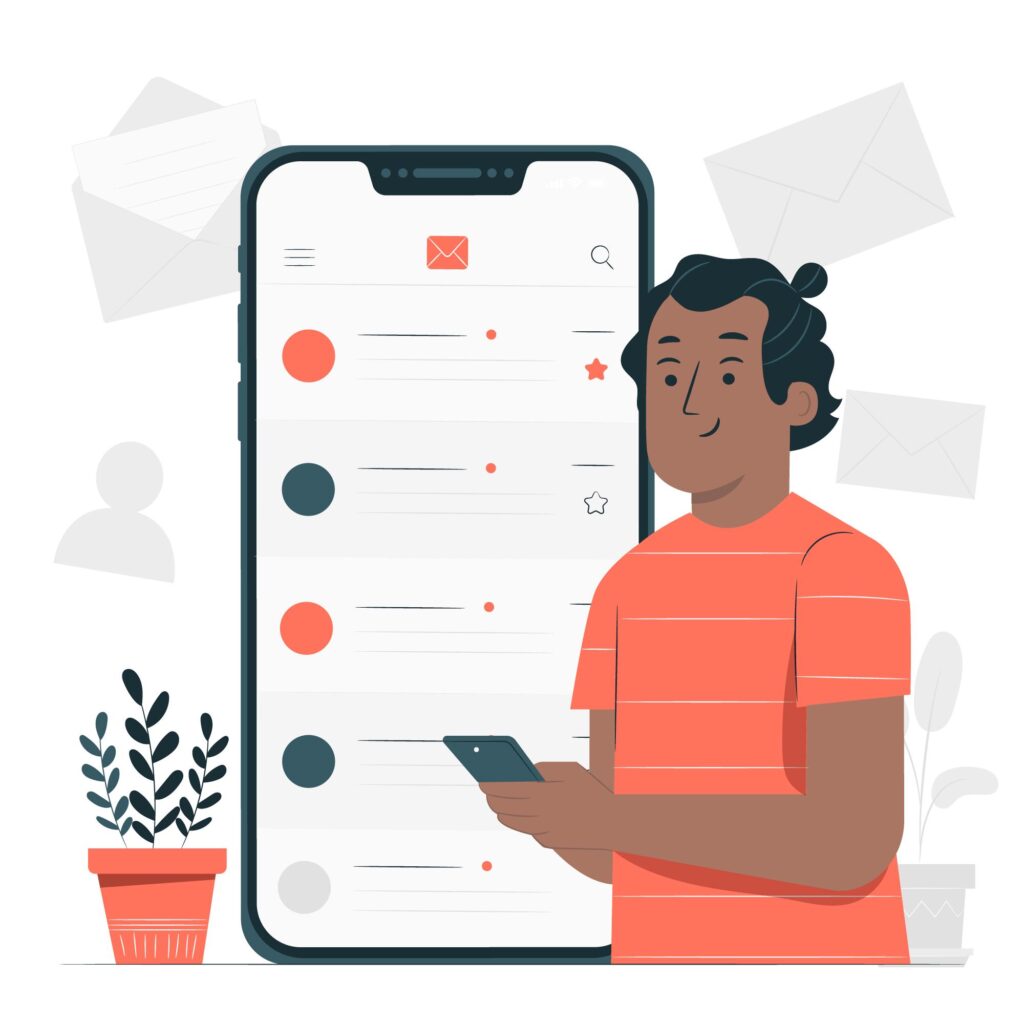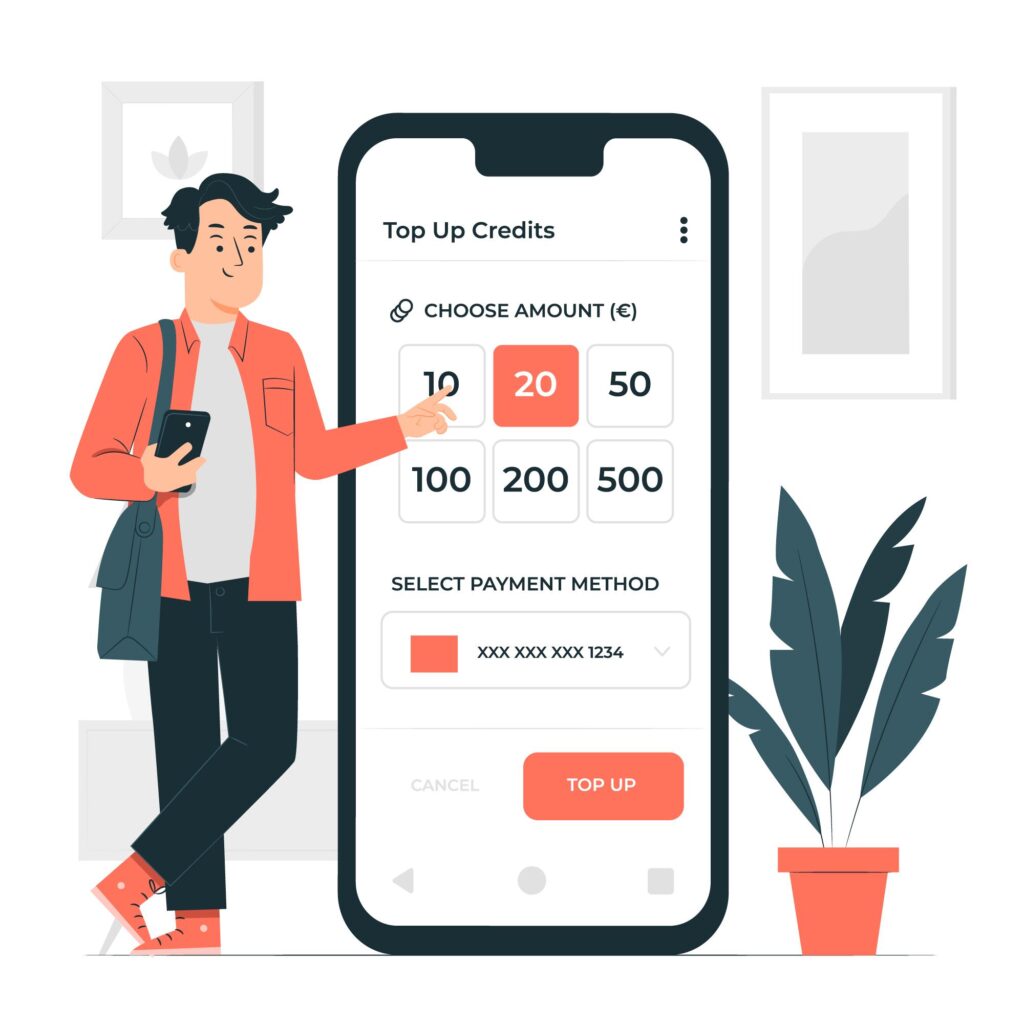Mobile Application Development: Your Gateway to Innovative Solutions
In an era where digital media consumption on smartphones is escalating, mobile application development stands as a pivotal gateway to ground-breaking solutions. These sophisticated software applications, designed to function on mobile devices, leverage network connections to interface with extensive computing resources. The burgeoning demand for adept mobile app developers is a testament to the pivotal role such applications play in enhancing digital engagement, fostering customer loyalty, and driving recurring sales.
A well-orchestrated mobile app development process not only encompasses the creation of installable software bundles but also involves backend service implementation and rigorous testing on target devices. With the advent of versatile mobile application platforms, developers are now empowered to erect applications more efficiently, streamlining time and cost. This article outlines the finest practices, from understanding different platforms—such as Android and iOS—to deploying effective monetization strategies, culminating in a thorough exploration of why one should enlist professional mobile application developers for developing a mobile app.

The Evolution of Mobile App Development
Tracing the roots of mobile application development takes us back several decades, beginning with the emergence of Personal Digital Assistants (PDAs). Here’s how the journey unfolded:
Early Beginnings (1980s – 1990s):
- PDAs like Psion’s Organiser I made their debut with elementary applications such as calculators and clocks, laying the groundwork for mobile technology.
- IBM’s introduction of the first smartphone in 1993 marked a significant milestone, as it came equipped with a suite of practical applications.
The Dawn of Modern Mobile Apps:
- The first recognizable applications were seen on Psion’s handheld computers in the early 1990s, which operated on the EPOC system.
- This era also witnessed the first public cellular phone call by Martin Cooper of Motorola in 1973, propelling mobile technology forward.
App Store Revolution and Current Landscape:
- The modern mobile app industry took shape when Apple opened the App Store in 2008, allowing third-party mobile app development.
- From the ‘information appliance’ model to the ‘home screen’ and ‘service layers’ era, mobile apps have significantly evolved.
- Presently, the Apple App Store and Google Play Store are bustling with activity, hosting millions of apps and accounting for the majority of smartphone usage time.
Mobile application development has become a dynamic field, with mobile app developers continually pushing the boundaries of what’s possible on our devices. As we look at the current state, where developing a mobile app can mean tapping into a market of millions of users, the importance of mobile application developers in shaping our digital experiences is more evident than ever.

Understanding Different Mobile Application Platforms
In the realm of mobile application development, a variety of platforms cater to the diverse needs of developers and organizations. These platforms can be broadly categorized as follows:
- Cross-Platform Apps: Enable developers to write code once and deploy it across multiple operating systems, such as Android and iOS.
- Native Apps: Built specifically for one platform, leveraging the full potential of device features.
- Low Code/No Code Apps: Simplify the development process with drag-and-drop interfaces and minimal coding.
- Web-Based Apps: Accessible through web browsers and not installed on devices.
- Hybrid Mobile Apps: Combine elements of native and web applications.
- Custom Development Platforms: Tailored solutions for unique business requirements.
The selection of a mobile app development platform should consider:
- Multi-Platform Support: The ability to operate across different devices and operating systems.
- Security: Robust protection against vulnerabilities.
- Integration: Seamless connectivity with other systems and services.
- Open-Source Libraries: Access to a community-driven pool of resources.
- App Monitoring and Analytics: Tools to track performance and user engagement.
- Development Tools: Quality and ease of use of the provided software.
- Deployment: Efficiency of getting the app into users’ hands.
- Future-Proof Functionality: The platform’s capacity to adapt to future technology changes.
Some of the leading platforms include:
- Xamarin: Offers a shared codebase and Microsoft integration, enhancing performance.
- React Native: Known for its hot reload feature and quicker assembly of developers.
- Flutter: Provides customizable widgets and simple integration, speeding up development.
- Ionic: Delivers a native-like experience and supports Progressive Web Apps.
- OutSystems: Ensures scalability and security, with AI-driven development capabilities.
When developing a mobile app, the choice of platform significantly impacts time-to-market and cost-effectiveness. By harnessing the strengths of these platforms, mobile app developers are equipped to deliver innovative solutions swiftly and efficiently.

Key Tools and Technologies for Building Your Mobile App
In the realm of mobile application development, a robust set of tools and technologies is essential for building innovative and efficient mobile apps. These tools facilitate various development stages, from ideation and design to deployment and maintenance. Here’s a comprehensive list of key tools and technologies that mobile app developers should consider:
- Integrated Development Environments (IDEs): These are crucial for writing, testing, and debugging code. Popular IDEs include Android Studio for Android apps and Xcode for iOS apps.
- Frameworks and Libraries: They provide a foundation for mobile app development, offering pre-written code and modules. React Native and Flutter are widely used for cross-platform app development, allowing code reuse across iOS and Android.
- Version Control Systems: Tools like Git help developers manage changes to the source code, enabling collaboration and tracking of each modification.
- Testing Tools: Quality assurance is vital. Tools such as Appium and Espresso allow for automated testing of the app across multiple devices and platforms.
- Deployment and Continuous Integration/Continuous Deployment (CI/CD) Tools: These tools, like Jenkins and Fastlane, streamline the process of releasing the app to the app stores and maintaining updates.
- Analytics and Monitoring Tools: Post-deployment, tools like Google Analytics and Crashlytics provide insights into app performance and user behavior, helping developers optimize the app.
By leveraging these tools and technologies, mobile application developers can ensure that the mobile app development process is efficient, the resulting apps are of high quality, and they meet the market’s needs. This strategic approach to utilizing the right set of tools is what sets apart proficient developers in the competitive landscape of mobile app development.

Best Practices in User Experience (UX) Design for Mobile Apps
In the fast-paced world of mobile application development, delivering an exceptional user experience (UX) is paramount. Here are best practices to ensure your app’s UX design stands out:
- Simplicity is Key: Embrace functional minimalism with clear graphics, ample space between elements, and a cohesive color scheme. This approach aligns with Google’s 25 mobile UX design tips, streamlining the user’s journey.
- Responsive Design: Cater to various devices by designing for different screen sizes and orientations. Whether it’s a smartphone or tablet, in portrait or landscape mode, the app should provide a seamless experience.
- Intuitive Navigation: Utilize familiar patterns such as tab bars and menus. Minimize the number of taps to access core features, making navigation a breeze.
- Consistency Matters: Keep UI elements uniform to aid the learning process. Consistent design of buttons, icons, and fonts quickens user adaptation.
- Prioritize Content: Arrange content by importance, using visual cues like size and color. Focus on user goals to prevent information overload.
- Readability: Choose legible fonts and high-contrast colors to enhance on-screen reading.
- Accessibility: Follow guidelines to ensure the app is usable by individuals with disabilities.
- Immediate Feedback: Show progress indicators and notifications to keep users informed about their actions.
- Streamlined Onboarding: Keep initial interactions brief. Allow users to explore before committing to sign-up.
- Minimize User Effort: Organize information efficiently, break down tasks, and use smart defaults to reduce user workload.
- Design for Interruption: Enable users to pause and resume tasks, accommodating the unpredictability of mobile use.
- Effective Use of White Space: Highlight key content and limit features to essential functions.
- Clear Language: Avoid jargon, opting for straightforward terminology.
- Remove Clutter: Cut back on unnecessary elements to enhance user understanding.
- Unobtrusive Navigation: Implement navigation that supports app structure discreetly.
- Thumb-Friendly Design: Place common controls within easy reach for one-handed use.
- Loading Content: Entertain users with distractions or anticipation screens while they wait.
- Personalization: Tailor content to user preferences and deliver messages at appropriate times.
- Feedback Channels: Establish ways for users to share their experiences and suggestions.
- Accessibility Compliance: Adhere to WCAG guidelines to accommodate all users.
By incorporating these UX design principles, mobile app developers can craft engaging and accessible applications that resonate with users, ultimately contributing to the success of the mobile app development process.

Monetization Strategies for Mobile Apps
In the landscape of mobile application development, monetizing your app can be as creative and diverse as the app itself. Here are the key strategies:
In-App Purchases & Subscriptions:
- Consumables & Non-Consumables: Offer users one-time purchases like virtual currency or permanent enhancements.
- Subscription Tiers: Provide ongoing access to new content or premium features through various subscription levels, catering to different user needs.
Optimizing In-App Purchases:
- Development Stage Planning: Integrate in-app purchase considerations early in the development process to ensure a seamless user experience.
- Branding with Creative Copy: Use compelling descriptions for in-app offers to entice users and reinforce your brand’s voice.
- Bundle Offers: Encourage bulk purchases by bundling items at a discounted rate.
- User Funnel Automation: Implement strategies to guide users towards in-app purchases, increasing the likelihood of conversion.
Advertising Models:
- Banner Ads: Simple yet effective, these ads can be placed at the top or bottom of the app’s interface.
- Interstitial Ads: Full-screen ads that appear at natural pauses in app usage.
- Native Ads: Seamlessly integrate with the app’s content, providing a less intrusive experience.
- Video & Rewarded Video Ads: Engage users with short video content; offer rewards for watching.
- Playable Ads: Interactive ads that provide a sample of the advertised game or app.
By employing these monetization strategies, mobile app developers can create a sustainable revenue stream while enhancing the user experience. It’s crucial to balance monetization with user satisfaction to ensure the app remains appealing and retains a loyal user base.

Why hire our professional mobile app development services?
Engaging professional mobile app developers is a strategic decision for any business looking to create impactful and user-friendly mobile applications. Here are the compelling reasons to consider:
- Technical Expertise: Professionals come equipped with the latest knowledge in mobile application development, adhering to industry standards and utilizing best practices. Their technical proficiency ensures high-quality app creation, tailored to the modern digital landscape.
- Customized Solutions: Every business has unique needs. Expert developers understand this and work closely with clients to craft apps that align with their specific goals, target audience, and the challenges they face.
- User-Centric Design: With a deep understanding of user behavior, professionals design intuitive interfaces that offer seamless navigation, visually appealing layouts, and interactive elements, enhancing user engagement.
Moreover, professional developers offer:
- Seamless Integration: They possess the know-how to integrate your app with existing systems, ensuring smooth data flow and functionality.
- Cross-Platform Performance: Save time and costs with apps that work flawlessly across various operating systems, thanks to the developers’ cross-platform expertise.
- Quality Assurance: A rigorous testing process is part of their protocol, ensuring your app is free from bugs and performance issues.
- Scalability and Maintenance: Apps are built to scale and adapt as your business evolves, with easy maintenance for long-term performance.
- Cost-Effectiveness: While upfront costs may be higher, the long-term benefits of quality, efficiency, and innovation lead to greater savings.
- Speed to Market: Leveraging their experience, professionals can expedite the development process, helping you launch your app swiftly.
- Local Insights: Local developers, particularly in tech hubs like Chicago, provide valuable cultural and market insights, ensuring your app resonates with your intended audience.
- Collaboration and Communication: Proximity allows for effective communication and collaboration, with opportunities for face-to-face interaction to streamline the development process.
FAQs
What are the primary approaches to developing mobile apps?
The four main approaches for creating mobile applications include native, web-based, hybrid, and cross-platform development.
Which technologies are considered the best for developing mobile apps in 2024?
The top mobile app development frameworks in 2024 include Flutter, React Native, Ionic, Xamarin, Native Script, Apache Cordova, Framework7, and JQuery Mobile.
What are the top tools for mobile app development?
The leading mobile app development tools encompass Expo Go, Visual Studio Code, CodeRunner, Kubernetes, Buddy for CI/CD, Xcode 14 for iOS apps, Android Studio for Android apps, and Charles Proxy for debugging.
Can you define mobile application development?
Mobile application development is the act of creating software that operates on mobile devices and typically requires a network connection to interact with remote computing resources.
What are the six stages in the mobile app development lifecycle?
The six steps in the mobile app development process are ideation, design, development, testing, launch, and post-launch, each influenced by current digital trends.
What are the five phases in the app development process according to the RAD model?
The five phases of the Rapid Application Development (RAD) process include business modeling, data modeling, process modeling, application generation, and testing and turnover.
How can mobile app development be enhanced to foster business growth?
To improve mobile app development for business growth, consider understanding user preferences, choosing the right platforms and features, ensuring offline functionality, maintaining simplicity, limiting ads and banners, offering customized designs, using grid-based layouts, and optimizing for ASO and SEO.
Which mobile app development frameworks should be considered in 2024?
Key mobile app development frameworks to consider in 2024 are React Native, Flutter, Xamarin, Ionic, Mobile Angular UI, JQuery Mobile, Corona SDK, and Native Scripts.
What are some tips for improving mobile app development?
Some tips for enhancing mobile app development include understanding user preferences, selecting the correct platforms and features, ensuring offline access, simplifying the app interface, limiting advertisements, customizing the design, creating grid-based apps, and ensuring ASO and SEO friendliness.
What is the future outlook for mobile app development?
The future of mobile app development is promising, with advancements in AI, ML, wearable technology, 5G, and no-code development. By 2025, the global AI market value is expected to surpass $126 billion, indicating AI’s significant role in the future of app development.
What are the three main categories of mobile applications?
The three primary categories of mobile apps are native, web, and hybrid, each with its own set of advantages and challenges, and the choice depends on the required app functionalities.
Can you provide an example of mobile application development?
An example of mobile application development is a gaming app that utilizes the iPhone’s accelerometer or a health app that leverages a smartwatch’s temperature sensor, with iOS and Android being the two dominant platforms.


